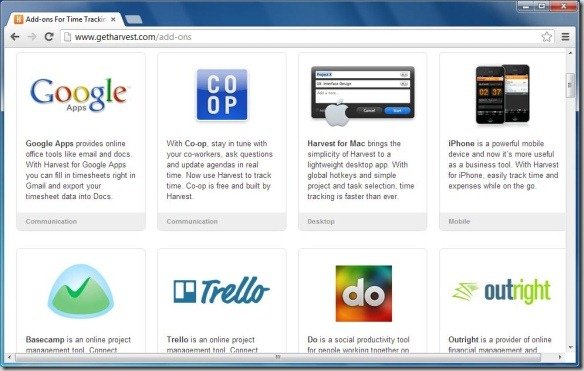

works for both hourly employees and salaried workers who need to track billable hours or time spent on projects. It’s a good solution if you want simplicity and are primarily interested in time and project management. It works with one-person businesses or teams. Toggl integrates with popular project management apps such as Asana, Basecamp and GitHub. Toggl also creates visual reports that show you how you and your employees are actually using your time and which projects are the most profitable. Advanced features in the paid version send employees automated reminders when they haven’t tracked time. Just click to start the timer when you begin a task, and click again to stop it when you end or take a break. Create an account, and connect the Toggl timer to more than 100 web apps. Toggl offers the ultimate in simplicity, letting you track time with literally two clicks. But in order to get adequately compensated for your time, you need to track how you spend it (and how your employees spend it.) Here are five useful time tracking apps for a variety of small business needs. Enditem.Time is every small business owner’s most precious commodity. But a drone can pollinate 2.6 hectares of pear trees within an hour, and the yield of pears can increase at least 500 kg per mu,” said Peng Wenjun, an expert of the Chinese Academy of Agricultural Sciences. “At least two workers are needed to manually pollinate for each mu (0.07 hectares) of pear trees. But recently, pear farmers have been using unmanned aerial vehicles to pollinate their pear trees. Previously, pear trees in southern Xinjiang were pollinated by bees or by men.

Meanwhile, the income of local farmers has increased due to the improvement of productivity.Īpart from the cotton industry, modern agricultural machinery and technologies apply to several fields such as crops and fruit plantations. “The rapid development of mechanization has greatly reduced costs for cotton farmers, and more and more farmers have been liberated from the land to make more money from other fields,” said the 32-year-old man.Īccording to available data, Xinjiang is the largest cotton-growing area in China, with a cotton output of 5.16 million tonnes in 2020, accounting for 87.3 percent of the total in the country.ĭue to this fact from the National Bureau of Statistics, the region has encouraged cotton farmers to apply modern agricultural machinery to boost the development of the industry in recent years.

The outfit has now introduced types of agricultural machinery like cotton pickers and drone sprayers and providing services for farmers in need.

For generations, my family used to harvest cotton by hand and traditional implements,” Dilshat Memet said.Īlthough Dilshat Memet has been using cotton pickers for several years unlike his father, the great convenience of mechanical operation compelled him and his partners to set up an agricultural company. “The high-efficiency cotton picker can handle the workload of several hundred people. This was all due to the machinery, Dilshat Memet, a cotton farmer in Yuli County, Bayingolin Mongolian Autonomous Prefecture, completed cotton picking in just one day.īut in the past, he would be busy collecting cotton all through the harvest season. The vast cotton fields in northwest China’s Xinjiang Uygur Autonomous Region saw roaring cotton-picking machinery when the harvest started this month instead of cotton farmers. The application of technology has made the cotton harvest season seamless in a Chinese region.


 0 kommentar(er)
0 kommentar(er)
